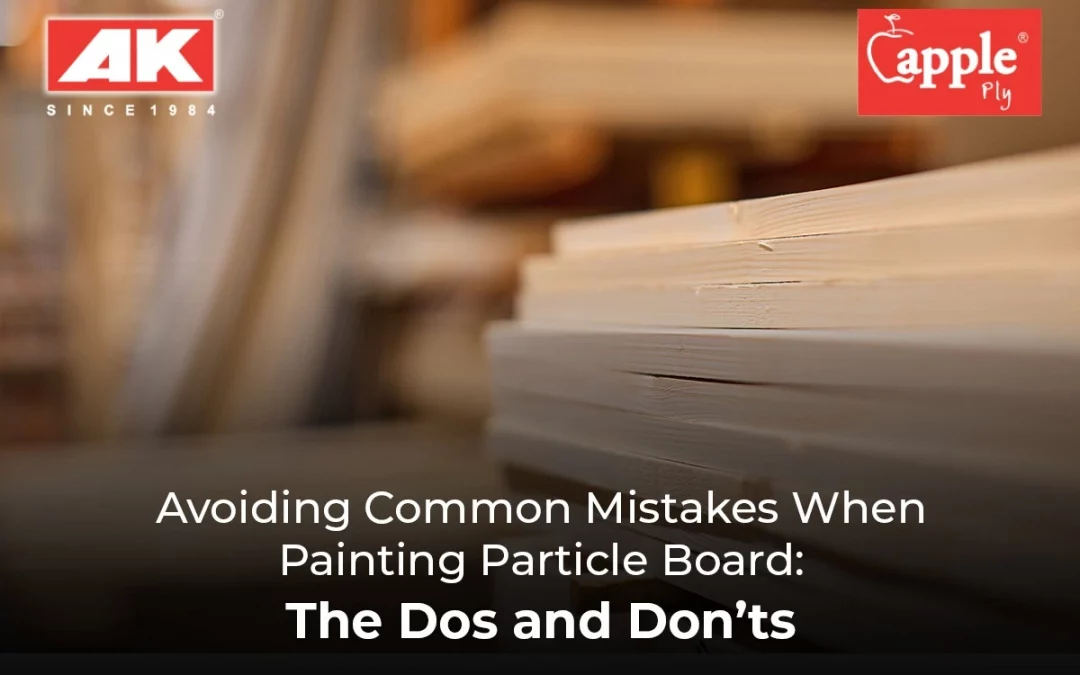Are you looking to update your furniture and give your house a brand-new look? Then, painting particle board furniture is the way to go!
Particle board is a type of wood product that is engineered from wooden chips, sawdust, and sawmill shavings. These particles are combined together using a binding agent like synthetic resin and then compressed into sheets or panels, which can then be used to make furniture.
While particle boards are not as sturdy as generic whole wood, their main attributes lie in their affordability and environmental sustainability. This is because particle boards furniture is made from the byproducts of other wood manufacturing processes. This makes it easy to acquire and extremely cost-effective.
Painting on particle boards can thus be an extremely affordable way to update your home’s aesthetic and give your furniture a new look. However, while it’s an excellent way to uplift the ambience of your house, it requires proper preparation and care. In this blog, we’ll discover the dos and don’ts of painting on particle boards so that you can avoid common mistakes.
Dos and Don’t of Painting on Particle Board
Here are the most common dos and don’ts that you can follow to successfully paint your particle board and spring your home to life!
Dos of Painting on Particle Board
Here is a non-exhaustive list of what to do while successfully painting a particle board:
1. It is Important to Clean the Surface
Before you start painting on a particle board, it is important to clean it thoroughly. This ensures that any dust, grime or grease is removed from the surface. A quick way to do this is by using a mild detergent and lukewarm water. Allow it to dry entirely before continuing.
2. Sand the Surface
As we discussed above, particle board is created using the byproduct of other manufacturing processes. This means it naturally has an uneven texture and porous surface. To deal with the unevenness and make it more paint-adherent, gently sand the surface with sandpaper.
This will make the particle board much smoother and easier to paint. But remember, always scrub in the direction of the wood grain otherwise, you run the risk of splintering.
3. Always Apply a Primer
This is crucial when it comes to painting on particle boards. Always use a high-grade wood primer, which is specifically designed for particle board furniture. Applying a primer helps the paint to stick better while also preventing the particle board from soaking up too much paint.
4. Choosing the Right Paint
When it comes to painting on particle board, it is strongly recommended that you opt for water-based latex or acrylic paints. This is because they work really well with particle board furniture and are suited to its texture. They also have additional advantages, like being more flexible and versatile when compared to oil-based paints and drying quicker. They also emit fewer fumes, which protects you from health hazards.
It is also important to remember that when it comes to painting a particle board, it is good practice to apply multiple thin layers of paint rather than one thick layer. Thin coats typically dry in a more cohesive and uniform manner, giving the particle board an even coat of paint. This enhances the finish and makes the particle board stand out more. Furthermore, this also makes the paint less likely to drip or bubble which can ruin the look. But remember to always allow each individual coat to dry thoroughly first, before proceeding with the next layer.
5. Protect the Painted Surface
Finally, once the paint coating has dried, apply a transparent sealer to protect the paint and give your particle board a shiny finish. This topcoat will also make your furniture more durable, making the paint less prone to chipping or dulling when prone to wear and tear.
Don’ts of Painting on Particle Board
Use this list of don’ts to avoid making common errors when painting on particle board:
- Never skip the primer, as it might cause uneven paint absorption and a subpar finish.
- Do not neglect sanding; this can lead to a rough, uneven look and make it harder for you to paint on the surface.
- Don’t use oil-based paints. They are more challenging to work with, crack or peel easier, and take longer to dry.
- Avoid applying one thick coat. If you choose to apply several thinner coats, remember to give adequate time for the preceding layer of paint to dry first thoroughly.
- Refrain from utilizing inferior-quality rollers or brushes. This is because low-grade rollers typically leave streaks, lint, or brush marks, which can spoil your finish.
Read More: Top 10 BWP Plywood Companies in India




